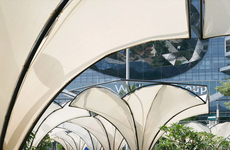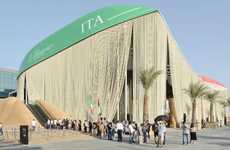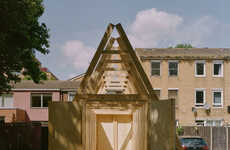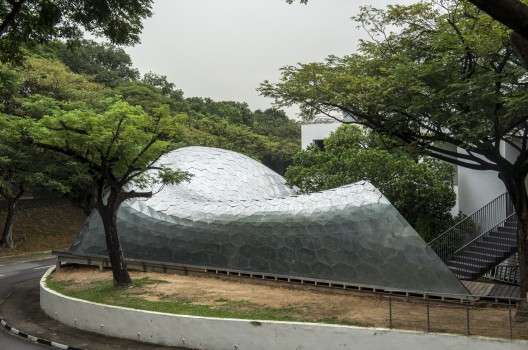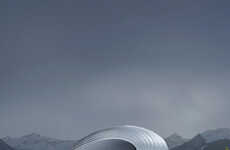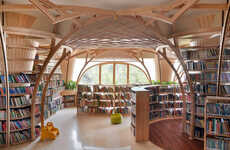
The 'SUTD Library Pavilion' is Recyclable and Modern
Jennifer Gosnell — June 25, 2013 — Eco
The SUTD Library Pavilion by City Form Lab located in Singapore is a fantastic example of eco-architecture. Created from plywood and sheet-metal tiles, these architects created a pop-up structure that can be dismantled and re-built or recycled.
"Using computational design and computer controlled fabrication allowed the pavilion’s complex three-dimensional form to be achieved with readily available materials and a streamlined assembly process at minimal cost," describes Arch Daily. This unique structure is perfectly accommodating for student or business gatherings, library study space and more.
As it does not have beams or solid walls, it creates the ideal temporary structure - solid while it's up, but easily dismantle-able. Further, space solutions like this are fantastic at accommodating existing trees, as this space did, and proving that eco-architecture can be creative and interesting.
"Using computational design and computer controlled fabrication allowed the pavilion’s complex three-dimensional form to be achieved with readily available materials and a streamlined assembly process at minimal cost," describes Arch Daily. This unique structure is perfectly accommodating for student or business gatherings, library study space and more.
As it does not have beams or solid walls, it creates the ideal temporary structure - solid while it's up, but easily dismantle-able. Further, space solutions like this are fantastic at accommodating existing trees, as this space did, and proving that eco-architecture can be creative and interesting.
Trend Themes
1. Eco-architecture - The trend of eco-architecture presents opportunities for creating sustainable structures using recycled materials and innovative design.
2. Pop-up Structures - The trend of pop-up structures offers the potential for temporary and easily dismantled buildings, providing flexible and adaptable spaces for various purposes.
3. Computational Design - The trend of computational design enables the creation of complex three-dimensional forms using readily available materials and streamlined assembly processes.
Industry Implications
1. Sustainable Architecture - The sustainable architecture industry can capitalize on the trend of eco-architecture to design and construct environmentally friendly buildings.
2. Events and Hospitality - The events and hospitality industry can leverage the trend of pop-up structures to create temporary venues that are easy to assemble and disassemble for different occasions.
3. Construction Technology - The construction technology industry can embrace computational design to optimize construction processes and create innovative structures efficiently.
5.1
Score
Popularity
Activity
Freshness

